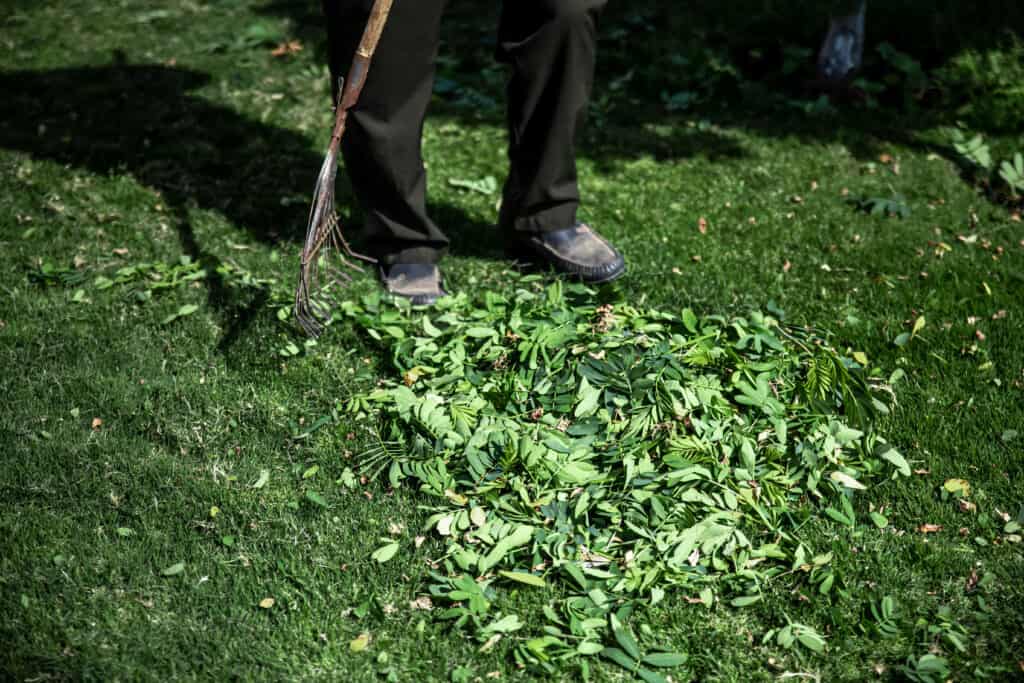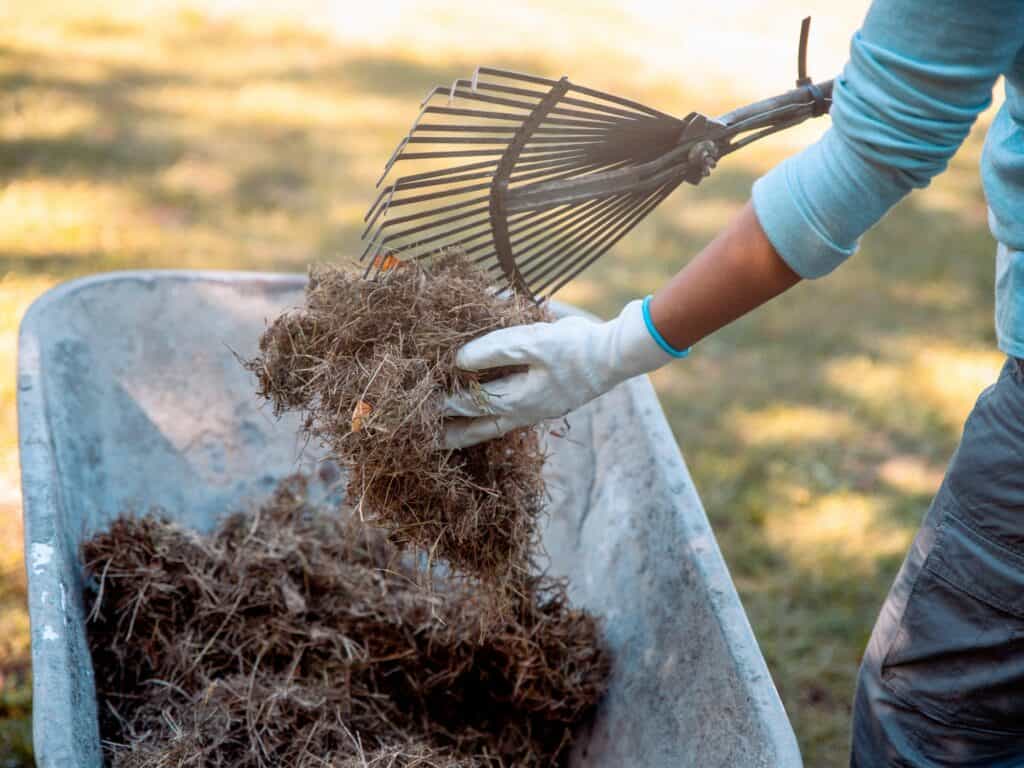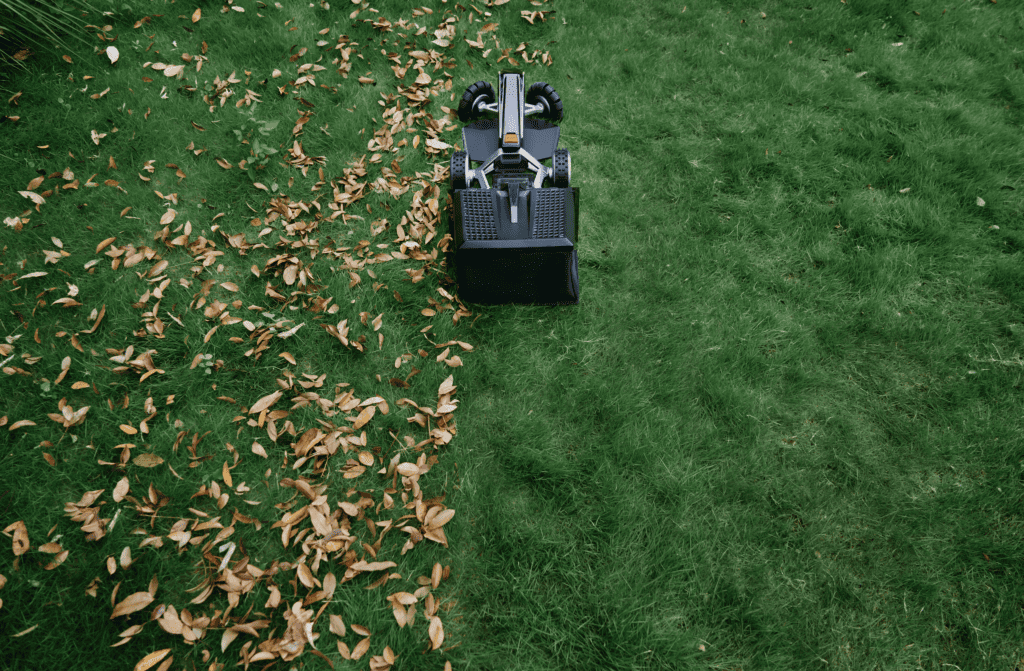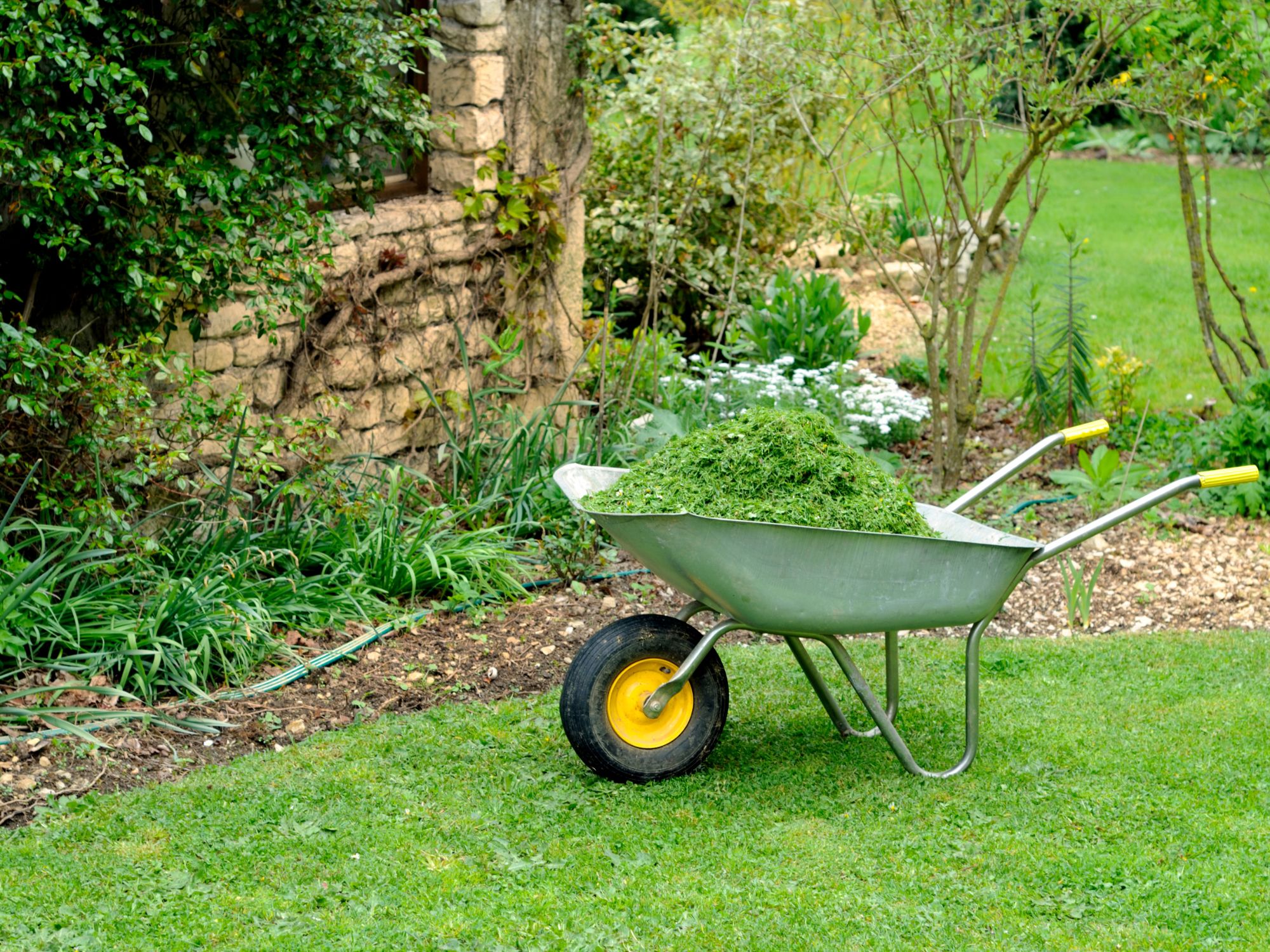Table of Contents
If you own a home with a lawn, you know that mowing the grass is a regular household chore. Each mowing session leaves behind a pile of grass clippings that can quickly become a nuisance. Did you know that in the United States, households generate an estimated 34 million tons of lawn clippings each year? That’s a lot of grass!
But don’t just toss them in the trash! Grass clippings can actually be a valuable resource if managed properly. In this guide, we’ll explore the many benefits of managing grass clippings and provide some practical tips for doing so.

The Benefits of Managing Grass Clippings
Mowing your lawn is a necessary task that should be done regularly to keep your yard looking neat and tidy. However, many people overlook the importance of managing grass clippings properly, which can lead to missed opportunities for benefiting from these valuable resources. Managing grass clippings on your lawn can provide a number of benefits, including:
- Natural Fertilizer: Grass clippings left on the lawn can act as a natural fertilizer, providing nutrients to the grass as they decompose.
- Reduced Yard Waste: By leaving grass clippings on the lawn instead of bagging them up and disposing of them, you can reduce the amount of yard waste you generate.
- Time & Energy Savings: Not having to bag and dispose of grass clippings can save time and energy during lawn maintenance.
- Soil Moisture Retention: Grass clippings left on the lawn can help retain soil moisture, reducing the need for watering.
- Improved Soil Health: The decomposition of grass clippings adds organic matter to the soil, which can improve soil health in the long run.
Managing your grass clippings and mowing your lawn at the appropriate frequency can provide numerous benefits for your lawn and the environment. Not only will you reduce waste and save time and money, but you’ll also improve the health and appearance of your lawn while contributing to a greener and more sustainable planet.
Composting Grass Clippings: Step-by-Step Guide
Composting grass clippings is a great way to create a natural fertilizer and enrich the soil in your yard or garden. It’s also an effective means of managing yard waste and reducing the amount of material that ends up in landfills. Here’s a step-by-step guide to help you get started:
Step One: Collect the clippings
Start by collecting the grass clippings after you’ve mowed your lawn. It’s best to collect them when they are still fresh and green for optimal composting performance. Be sure to use only grass clippings that are free of pesticides and other chemicals that might harm your compost.
Step Two: Mix with other green and brown materials
Mix the grass clippings with other green and brown materials to create a balanced compost pile. Green materials can include food scraps and garden waste, while brown materials can include leaves and small twigs. The ideal ratio of green to brown materials is roughly 3:1.

Step Three: Add water as needed
Composting requires moisture, so be sure to add water to your pile as needed. The compost should be moist but not soggy. A good test is to grab a handful of the compost and squeeze it. If water drips out, it’s too wet.
Step Four: Turn the compost regularly
To help speed up the composting process, turn the pile regularly using a pitchfork or compost aerator. This helps to aerate the pile and distribute the heat and moisture evenly.
Step Five: Monitor the temperature
As the composting process takes place, the pile will generate heat. Use a compost thermometer to monitor the temperature, which should ideally be between 135°F and 160°F. If the pile’s temperature falls below this, turning the pile and adding nitrogen-rich materials can help to bring the temperature back up.
Step Six: Wait for the compost to mature
After several weeks or months, the compost will mature and be ready to use in your garden. The compost should be dark brown and have an earthy smell. Spread the compost around your garden beds or mix it into the soil to provide a nutrient-rich fertilizer for your plants.
By following this step-by-step guide, you can effectively use grass clippings to create a natural fertilizer and enrich the soil in your yard or garden.
Using Grass Clippings as Mulch: Tips and Considerations
Another option for managing grass clippings is to use them as mulch. Mulch helps to suppress weeds, retain moisture in the soil, and regulate soil temperature. Grass clippings make an excellent mulch, especially in vegetable gardens where they can help to suppress weeds and conserve moisture.
When using grass clippings as mulch, be sure to apply a thin layer (no more than 1-2 inches) to avoid matting and excessive heat buildup. You should also avoid using clippings from lawns that have been treated with herbicides or pesticides, as these chemicals can persist in the clippings and harm your plants.
Grass Clippings as Natural Fertilizer: How to Use Them Safely
As mentioned, grass clippings make great natural fertilizer. However, it’s important to use them safely. If you plan to use grass clippings as fertilizer, be sure to avoid applying them in thick layers which can smother your plants and promote disease. Instead, apply a thin layer and mix it into the soil to avoid nitrogen burn that can happen when clippings decompose too quickly.
Also, be aware that grass clippings from lawns treated with herbicides or pesticides should not be used as fertilizer. If in doubt, it’s always best to err on the side of caution and avoid using clippings from chemically treated lawns altogether.
Leaving Grass Clippings on Your Lawn: Pros and Cons
Leaving grass clippings on your lawn has become a popular practice in recent years, and for good reason. When left to decompose on the lawn, grass clippings can provide up to 25% of the lawn’s fertilizer needs and help to build healthy soil. This can save you time and money on lawn care products, while also reducing your lawn’s environmental impact.
However, leaving clippings on the lawn isn’t always the best choice. Thick clumps of clippings can smother the grass, creating a breeding ground for disease and pests. Additionally, if your lawn is already suffering from disease or other issues, leaving clippings may not be helpful. In some cases, it may be necessary to remove grass clippings from your lawn after mowing, such as when the clippings are too long or the lawn is already overgrown. If you’re tired of manually mowing and composting your grass clippings, consider investing in an automatic lawn mower like the EcoFlow BLADE. The EcoFlow BLADE is designed to mow and mulch at the same time, which reduces the need for raking and bagging of grass clippings. This not only saves you time and effort but also reduces the risk of breeding diseases in your clippings that can form when they are left on the surface of the lawn.

How to Handle and Store Grass Clippings: Best Practices
If you decide to manage your grass clippings, it’s important to handle and store them properly. Here are some best practices to keep in mind:
- Collect clippings in a bin or compost pile and mix well with other organic material.
- Be sure to wear gloves and a mask when handling clippings to avoid breathing in dust and mold spores.
- Store any excess clippings in a covered container to prevent rain from washing away nutrients.
- If using grass clippings as mulch, don’t apply too much at once and avoid using clippings from chemically treated lawns.
Common Mistakes to Avoid When Managing Grass Clippings
While managing grass clippings is generally a straightforward process, there are some common mistakes to avoid. These include:
- Applying too much grass mulch or using untreated clippings that can contain weed seeds.
- Mixing clippings with other organic materials that contain herbicides or pesticides.
- Storing clippings in plastic bags that can cause them to ferment and produce foul odors.
- Waiting too long to collect clippings after mowing, which can cause them to dry out and lose nutrients.
Conclusion
Managing grass clippings is an important task that can benefit your lawn, garden, and the environment. Depending on your preference and the condition of your lawn, you can choose to compost your clippings or leave them on your lawn. There are many ways to put this valuable resource to good use. Additionally, if you’re looking for a convenient way to mow your lawn, consider the EcoFlow BLADE. With this device, you can sit back and relax while it navigates your yard and maintains a perfectly manicured lawn.
No more grass clippings to worry about! By following the tips and best practices outlined in this guide, you can make the most of your grass clippings and keep your lawn looking its best. So the next time you fire up your lawn mower, think about the many ways you can put those clippings to work for you.
FAQs
Grass clippings are the small bits of grass that are cut off during lawn mowing. They are typically left behind on the lawn or collected in a bag attached to the mower. Grass clippings are a valuable source of organic matter, rich in nitrogen, potassium, and other important minerals that can be beneficial for soil health and plant growth.
If you use pesticides or herbicides on your lawn, do not use your clippings as fertilizer or mulch. These chemicals can stay in the clippings and transfer to your plants. If you’re unsure whether your clippings are safe to use, it’s best to err on the side of caution and dispose of them.
If you don’t have a compost bin, you can store excess clippings in a covered container to prevent them from composting prematurely. Be sure to add some brown material (like leaves or shredded newspaper) to help balance the green material and avoid odors. Alternatively, you can simply leave the clippings on your lawn in a thin layer to decompose over time.
Fresh grass clippings can be used as mulch, but be sure to use them sparingly to prevent matting and to avoid nitrogen burn. It’s best to let them dry out for a day or two before spreading them, which will also help prevent clumping.
Grass clippings are generally safe for use on most plants, but it’s best to avoid using them on plants that are susceptible to fungal diseases (like roses, squash, and pumpkins). Additionally, avoid using clippings from lawns that have been treated with herbicides or pesticides.
The frequency of lawn mowing varies depending on your location, climate, and lawn type, but mowing once a week during the growing season should be enough to generate a significant amount of grass clippings. If you have a particularly large lawn, you may need to mow more frequently to generate enough clippings for composting.
